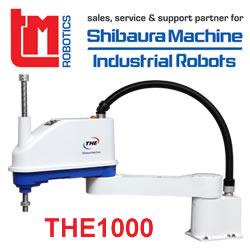FUTURE ROBOTIC CARS Unvieled at Tokyo Motor show 2015
Toyota Invests $1 Billion in AI and Robots, Will Open R&D Lab in Silicon Valley
Crowdfunding Projects For November
SkyTech 2016 - UAV Conference & Exhibition
Skype founders invent self-driving robot that can deliver groceries for �£1
3D Printing and Acoustics: Rapid Prototyping of Sound Diffusers
Collaborative Robot Applications
Robots in Restaurants
UCSD to create robots that see, think and do
How Sensorimotor Intelligence May Develop
Spreading like Wildfire
Batteries for Robotics Applications
Six-axis robotic arm called Eva, which weighs 2.3 kilograms and will cost $3,000
Simplifying the Design of Robotic Systems
New Flight: Despite Hurdles, Drones Are Taking Off
Records 2641 to 2655 of 3551
First | Previous | Next | Last
Featured Product

